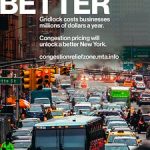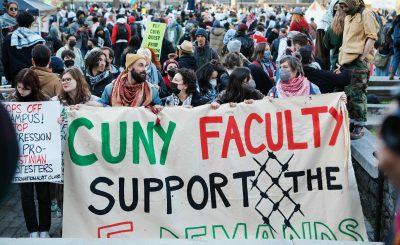
By Antonio Otero
Is getting around more expensive these days? If you’ve asked yourself this question, the unfortunate answer is probably yes. Living in New York City requires the use of public transportation for all commuters, including workers and students trying to get to work and school, which has gotten increasingly expensive. To save money some commuters might drive to the city instead, but that option has come to an end with the Central Business District Tolling Program also known as the “Congestion Relief Zone”.
In the past year the Metropolitan Transportation Authority (or MTA, as most of us refer to it), along with Governor Kathy Hochul, have made several changes to driving in the city through the new congestion tolls. A recent New York Times article from March 2025, reports , “Most passenger cars are charged $9 during peak hours to enter the congestion relief zone, which runs from 60th street to the southern tip of Manhattan. Trucks pay $14.90 or $21.60 depending on size. Tolls are discounted by 75% overnight.” These tolls were put into place to reduce traffic and try to raise funds for improvements in public transportation.
New York City has notoriously been known for dirty subways where a lot of crime occurs which significantly affects approximately 3.6 million people who ride the subway daily according to the MTA.
Although the intentions seem positive, there are a large number of city goers who do not support the tolls and having to pay to enter the city. One student named Nicholas expressed these sentiments. “I definitely do not agree with these tolls especially because I work in the city. We have to pay every time we drive in which adds up drastically over time.” There have been many rallies and protests that have taken place against these tolls in defense of working-class citizens like Nicholas just trying to make a living.
While many people are against the congestion tolls, there are some who have a different outlook on the situation. Queensborough professor Trevor Milton of the Sociology department had this to say. “I believe it will be good for the city by bringing down congestion and lessening traffic. My only issue is I don’t know how much I believe that it will be used to fix the subways.”
As of March 2025, the MTA has reported that they have profited over 100 million dollars after the first two months of the tolls being put in place and expect to receive over 500 million dollars annually.
With the tolls bringing in so much money to the city, you would think the federal government has been on board and supporting Governor Hochul in developing this new program but that is far from the case. The Trump administration and (DOT) Department of Transportation have been very vocal about how they don’t approve of the new toll program mainly because there isn’t a toll-free option to access lower Manhattan.
It’s no surprise President Trump has strong feelings about the tolls with him being from New York and owning much real estate there. An article reported by the Wall Street Journal in February 2025 states, “‘CONGESTION PRICING IS DEAD,’ Trump said Wednesday. ‘Manhattan and all of New York, is SAVED. LONG LIVE THE KING!’” Governor Hochul responded, “We are a nation of laws, not ruled by a king…We’ll see you in court.” Governor Hochul and President Trump have been going back and forth ever since Sean Duffy the U.S secretary of transportation set a deadline for New York to shut down the congestion toll program on March 21. Since then, Governor Hochul has held her ground in spite of significant threats to shut down the funding to mass transit projects in the state.
“Keep the cameras on!” Hochul has said, referring to cameras that record and charge drivers in the congestion zone.
As of this writing, the deadline for New York to shut down the Congestion toll program has been moved to late May. With the Governor and the MTA having no plans to go through with the shutdown we shall see a lot more back and forth in the standoff between the Trump administration and the New York government. With the MTA’s plans to profit 15 billion dollars it’s hard to imagine them shutting down the program and trying to find new ways to raise profits.
The main question New York citizens must ask themselves is, would they accept the tolls if real work was done to improve transportation systems and ensure safety in the city or is it not worth the cost?




